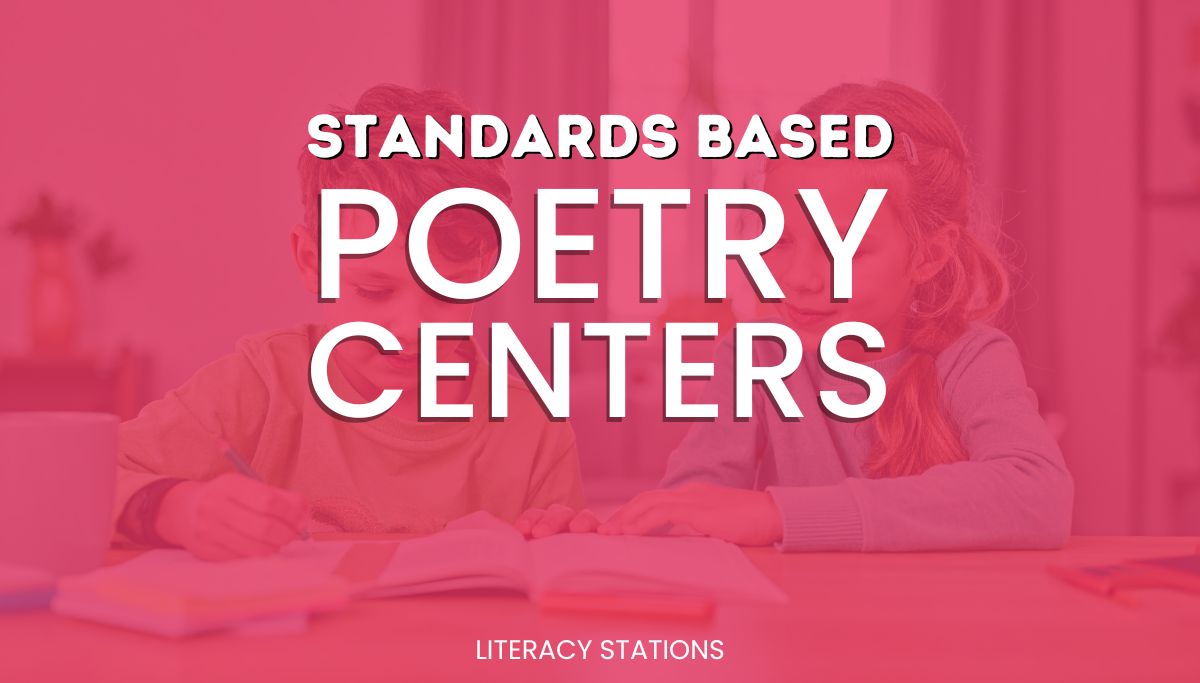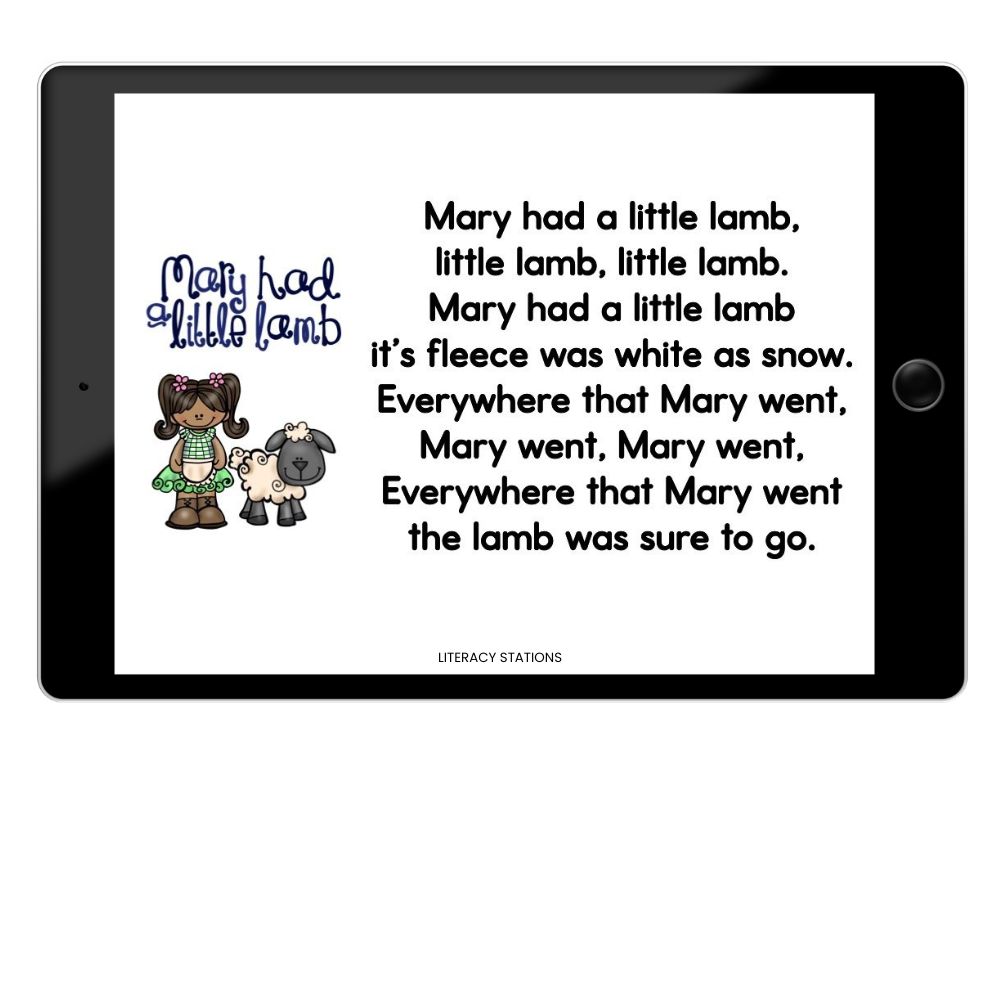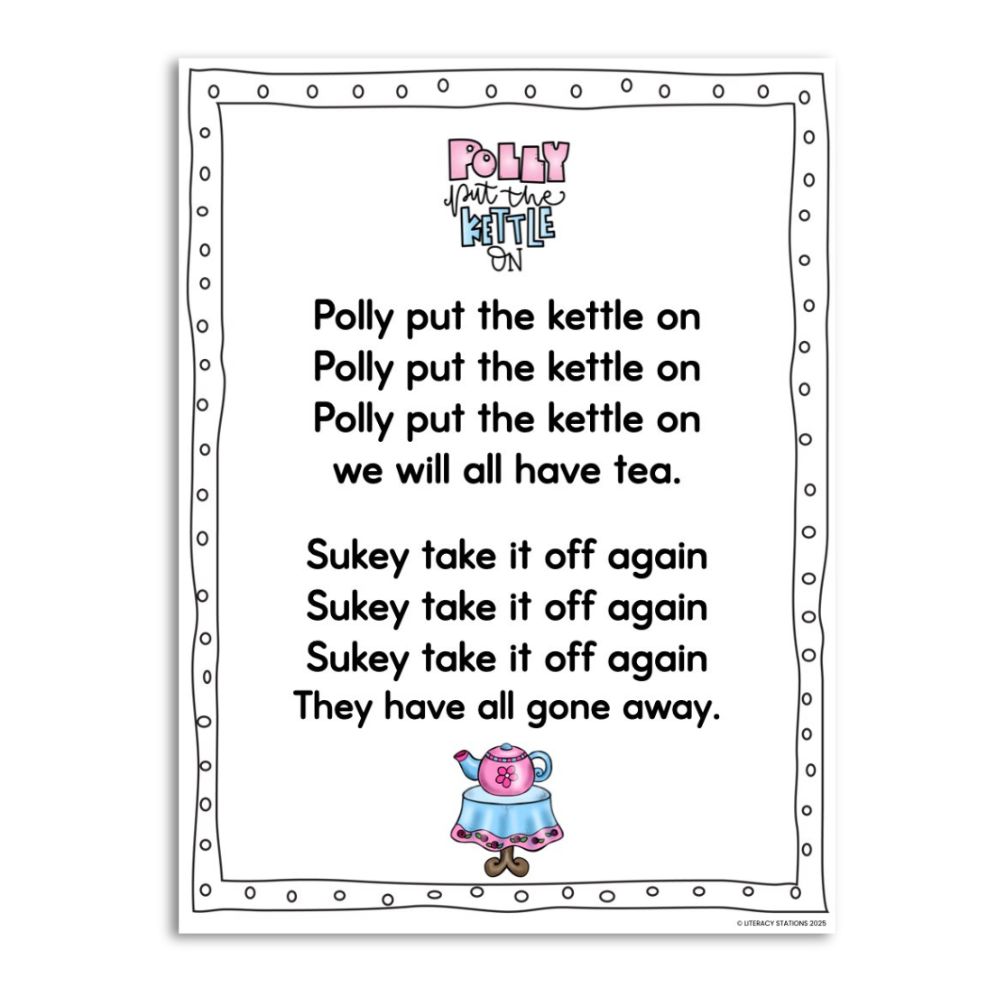Standards based poetry centers do more than fill time during literacy rotations, they can directly support the skills first graders need to become fluent readers. When aligned with standards and Science of Reading principles, poetry helps students connect sounds to print, read with expression, and understand what they read. Here’s how 1st grade poetry activities support those goals.
STANDARDS
RL.1.2 - Retelling the Poem
RL.1.4 - Identifying Feelings
RF.1.2 - Phonemic Awareness
RF.1.3 - Word Recognitions
How Poetry Centers Meet 1st Grade Reading Standards
In first grade, standards based poetry centers give students opportunities to practice the reading standards they’re already working on during whole-group and small-group instruction.
Because each poem is short and predictable, students can focus on one targeted skill at a time, like retelling, identifying rhyme, or decoding new words in context. Below are the key standards supported through poetry center activities and what students learn as they work with each one.
RL.1.2 – Retelling and Understanding
In first grade, students begin to demonstrate comprehension by retelling what they’ve read in the correct order. This skill is practiced through activities like sequencing poem strips and completing visualization pages.
- When students put a poem’s lines back in order, they’re recognizing story structure, rhythm, and flow. They’re also able to identify the beginning, middle, and end of a poem, an important retelling skill.
- Visualization activities support this same standard by encouraging students to think of what they imagine when they’re reading the poem. Drawing a picture helps them focus on key details and reinforces understanding of the poem’s meaning.
These 1st grade poetry activities cover RL.1.2 by giving students repeated practice with sequencing, visualization, and retelling.
RL.1.4 – Rhythm, Rhyme, and Feelings
In first grade, students begin to notice how language can create feeling and sound. Through rhyme, rhythm, and repetition, they learn that words can sound a certain way to express emotion or emphasize meaning.
In our standards-based poetry centers, students identify and discuss words or phrases that show feelings or appeal to the senses. The predictable rhythm of each poem helps them recognize when language feels calm, silly, or exciting.
As they read the poems aloud, students experiment with expression and phrasing. They hear how a poem’s rhythm changes its meaning and practice adjusting their voices to match the mood.
These first grade poetry activities help students meet RL.1.4 by teaching them to listen for emotion in language.
RF.1.2 – Phonological Awareness
In first grade, students learn to demonstrate an understanding of spoken words, syllables, and sounds. This means hearing the individual parts that make up a word and recognizing how those sounds work together to form meaning.
Using 1st grade poetry activities, students strengthen phonological awareness through rhyme, rhythm, and repetition. When they listen to or read a poem, they practice hearing rhyming pairs, identifying beginning and ending sounds, and clapping out syllables in multisyllabic words.
Listening to the poem set to music helps students practice with sound recognition. As they listen or sing along, they’re learning to hear patterns in language. These standards based poetry centers support RF.1.2 by giving students multiple ways to listen for and work with sounds.
RF.1.3 – Phonics and Word Analysis
Using these first grade poetry activities, students complete fill-in-the-blank poems and read mini books about the poem. This helps students show their knowledge of letter-sound relationships to decode words in context and not isolated lists.
Because the poems are short and familiar, students can focus on accuracy and pattern recognition. As they see word families like -ake or -ight appear across different poems, they start to recognize those chunks automatically and apply them in new reading situations.
Science of Reading Activities
Introducing standards based poetry centers to students is one of the most natural ways to build early reading skills. The rhythm, repetition, and rhyme found in poems give students meaningful practice with phonemic awareness and fluency, two important pillars of the Science of Reading.
Building Reading Fluency
Learning to read fluently is more than reading quickly, it’s reading smoothly, with accurate words and natural expression. In first grade, fluency develops through consistent practice with short, predictable texts like poems and songs.
When students reread familiar poems, they begin to recognize words instantly and hear how phrases fit together. Modeling fluent reading of a poem gives students a chance to practice pacing and phrasing. As they follow along while you read aloud, they notice where your voice rises and falls and how you pause at punctuation. Over time, they begin to mirror that expression in their own reading.
Repeated readings help students move from sounding out each word to reading entire lines smoothly. The rhythm and rhyme of poetry naturally guide students toward reading with flow and confidence.
When poems are set to music, students naturally hear how fluent reading should sound. The rhythm and melody guide pacing, expression, and phrasing, making repeated readings more engaging. Our 1st grade poetry activities have short videos with 25 popular children’s songs and nursery rhymes set to music.
Phonological and Phonemic Awareness
In first grade, students begin to listen closely to the sounds that make up words. Through poetry, they learn to recognize rhyming pairs, count syllables, and notice how words can be broken apart into smaller sound units.
When students read or listen to a poem, they hear patterns, like how cat and hat end the same way, or how spider has two beats when they clap it out. These Science of Reading activities strengthen their ability to identify, blend, and separate sounds within words.
Phonics and Word Recognition
First grade students move from hearing sounds in words to connecting those sounds with letters and patterns they see in print. Poetry supports this transition by giving them short, predictable texts where they can apply phonics skills in context.
When students complete fill-in-the-blank poems or reread mini books, they practice using letter-sound knowledge to decode real words, not just isolated lists. Repeated exposure to common word patterns, like -ight or -ake, helps them recognize those chunks instantly in new words.
Because the poems are familiar, students can focus on noticing spelling patterns, reading high-frequency words accurately, and building confidence as they read each line. Each rereading reinforces word recognition, helping students connect decoding to fluent, expressive reading.
Vocabulary and Language Development
Poetry is one of the easiest ways to help first graders build vocabulary. The short, rhythmic lines give students repeated exposure to language they can actually hear and use. As they read and reread familiar poems, they start to notice how words can describe movement, express feelings, or paint a picture in their minds.
When you pause to talk about an unfamiliar word or phrase, students learn to use the clues around it to figure out meaning on their own. Over time, these small moments help students look for meaning, not just sounds.
Classroom Benefits
- Activities are low-prep and easy to implement. Just print or assign digitally.
- Each poem resource clearly links to standards, simplifying lesson planning and documentation.
- These 1st grade poetry activities are flexible to work across whole-group lessons, small-group instruction, or poetry centers.
- Entertaining poems build student confidence with familiar text and rhythm.
- The accompanying activities encourage rereading for fluency and comprehension.
- Resources engage visual and learning modalities.
- A choice of printable and digital resources helps cater to student needs.













